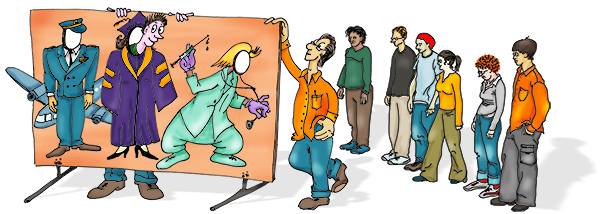“Lost in Translation” was a wonderful movie by Sofia Coppola, starring Bill Murray and Scarlett Johansson. It depicted the delicious confusion of Western tourists in total Japanese cultural emersion. In particular, the scenes where Bill Murray shoots a liquor commercial for the Japanese market are simply priceless. In retrospect, I see where Ms. Coppola got her ideas. Her cousin, Nicholas Cage, have been making wonderfully odd (to our sensibilities) commercials for years. He clearly had stories to share. Here are a few of his gems, courtesy the World Wide Web: and But it’s not only Japan that surprises our/my cultural biases. This morning, my husband and I went to a local grocery store in Rome, Italy. In the cheese section, there was a little paper bottle of parmesan cheese with a mouse of the package. The mouse didn’t work for me at all! So much for cultural differences. Here’s a small collection of ads for McDonalds from all over the world. Please compare it to the packaging and menus for this restaurant chain that I’ve posted here in the past: “Cultural World Domination”. Notice all of the anchoring errors, metaphor mistakes, cultural biases, mirroring errors, and general cognitive and cultural…
Product Design Strategy
Conceptual Design, Cultural Bias, Flow, Interaction Design, Interface Design, Language, Perception, Pipsqueak Articles, Product Design Strategy, Scaffolding, Working Memory
The Haptic Feel of Books versus eBooks
by Olga Werby •

We’ve traveled to Rome for our family vacation this year, and aside from a few summer reading books that I couldn’t find in an eBook format, we relied on our two Kindles and 3 iPads for our family reading needs. This is the second summer we brought primarily electronic versions of books—”The Count of Monte Cristo” is much easier to read when it fits into your hand and doesn’t weigh a ton… In the days before the Kindle and iPad, we carried an extra suitcase just for books. But there are drawbacks to buying and reading eBooks. Below are some of my thoughts and experiences—the cogitations of a voracious reader. Time & Progress As I was reading my novels, I found myself repeatedly trying to figure out where in the book I was. How far along was I? When is the next natural break (chapter, section end)? How many pages are there to the end of the chapter, end of the section, end of the book? These were not idle curiosities about my reading accomplishments, although when you do finish reading the book version of “The Count of Monte Cristo”, you do have a sense of having read something. An…
Conceptual Design, Pipsqueak Articles, Product Design Strategy
Good Idea, Bad Idea
by Olga Werby •

In the spirit of Animaniacs’ “Bad Idea, Good Idea,” enjoy the following product ideas. And for those who’ve never heard of Animaniacs, please watch the short segment (you can see more on YouTube!). Need a bit of assist in your bedroom? Add springs for the extra bounce. Find yourself in need of a sure grip? Make room for fingers. Short on space? Don’t waste the cupboards under each stair. Need more animation in the morning? Use the light. Bored with tea? Get a personal assistant. Worried about your waistline? Get measured. Live to serve? Bump it up. Too sure-footed? Make every climb a challenge. Too close? Give your photos some distance. Product design is limited only by imagination. A Short Introduction to Animaniacs’ “Bad Idea, Good Idea”
Cultural Differences, Pipsqueak Articles, Product Design Strategy, Reference, Scaffolding, Users
Generation C, a Sample User Persona
by Olga Werby •
Here’s an Booz & Company article by Roman Friedrich, Michael Peterson, Alex Koster, and Sebastian Blum: “The Rise of Generation C Implications for the World of 2020.” [contact information for the authors is available inside the PDF] The Rise of Generation C
Cognitive Blindness, Conceptual Design, Diagnostic Errors, Errors, Featured, Mirroring Errors, Pipsqueak Articles, Product Design Strategy, Scaffolding
Empathy on the Brain
by Olga Werby •

Empathy is a necessary component of product design. To design and make something that is comfortable to use for someone else, requires the maker of the product to imagine how another human being would feel while using it. This is a hard thing to do. Medical students have to take “bed side manners” classes that explicitly teach empathy for the patient. Some design schools do the same (check out this video in Product Design Resources). Fortunately, humans come equipped with a special region in the brain whose job it is to help us see the world from another’s point of view. Here’s a short introduction by Rebecca Saxe, “How we read each other’s minds.” So when we go to the movies, we relate to the characters and feel what they feel, and cry when they are sad, and laugh when they are happy, and cringe when things get awkward, because we have the Right TPJ (or RTPJ) region in our brain just behind and above our right ear. We aren’t born ready to use this part of our brain, as the experiments described by Dr. Saxe in the video show. It takes a long time for this social problem solving…
Cultural Differences, Pipsqueak Articles, Product Design Strategy
Bio-Couture
by Olga Werby •
My grandmother grew a “mushroom” in her kitchen, feeding it tea and sugar. It had a slightly sickly sweet smell and it was hard and springy to the touch. I never liked to drink the stuff, but I always considered it somewhat of a family pet (I never had a dog or cat, being allergic to both). Years later, a friend game a small batch of mother culture grown in black tea—”That’s the stuff,” I thought! I kept growing it for a few years, with my family extremely squeamish even at the thought of it living in our kitchen. But I liked it, it felt like a bit like having grandma in my kitchen. It lived for about 4 years, and then died when we left it alone for a few weeks while we traveled on vacation. My boys were thrilled. Recently, I’ve read that Google has been growing these in green and black tea varieties for their employees cafeteria—apparently, it’s in fashion again. And now I came across a video below: Now that’s truly being fashionable!
Cultural Bias, Cultural Differences, Ethnographic & User Data, Pipsqueak Articles, Product Design Strategy
Cultural World Domination
by Olga Werby •

When we first arrived in New York as Russian refugees many, many years ago, everything was so confusing. I remember lying on the bed in a hotel room somewhere in Brighton Beach, Brooklyn, with my whole family (mother, father, sister, and me) and watching commercials on TV. There was a stick figure running around the screen screaming “Cherio-o-o-o-o-o-o-o-s.” We debated for hours trying figure out what it was about. And then there was a time when my parents let me buy a bag of Cheetos. I almost vomited when I tried one—in Russia, things that looked like that were sweet. The complete mismatch between my expectations and the actual taste made me gag. To this day, I hate the stuff! So when companies are on the path of world domination with their products, understanding cultural differences in background knowledge, perceptual expectations, preferred ways of doing things is a must. To see how some giants customize their products to make them more culturally sensitive, I took a look at McDonalds‘ menus from around the world. Check it out: Note: I went looking for the old Cheerios commercial, but could only find this one—it’s close, but the one we saw didn’t have…
